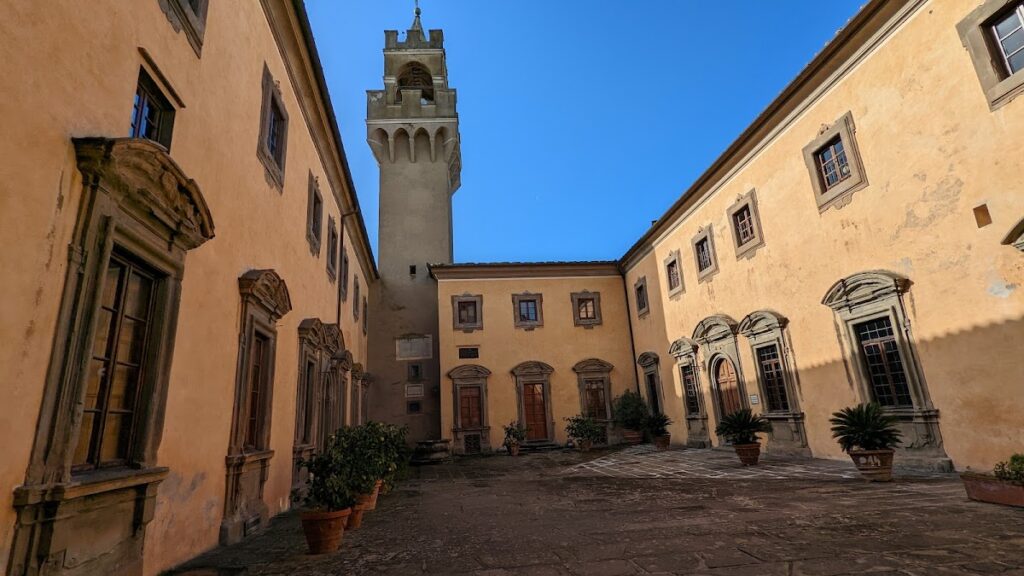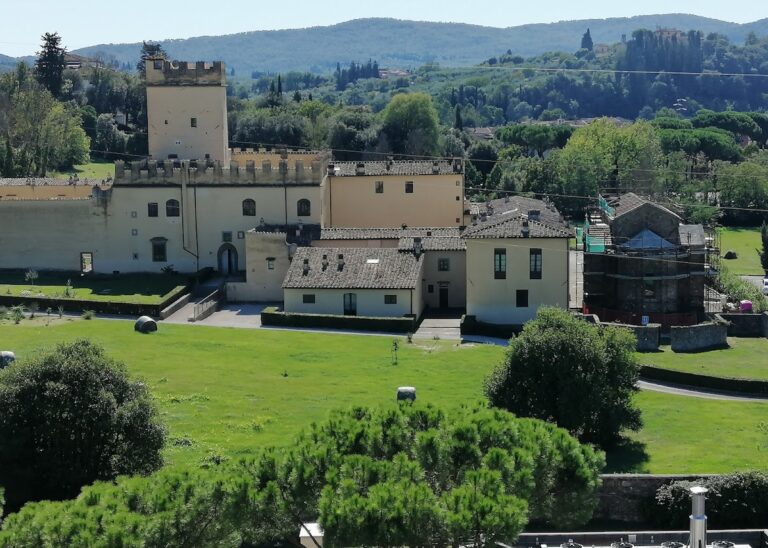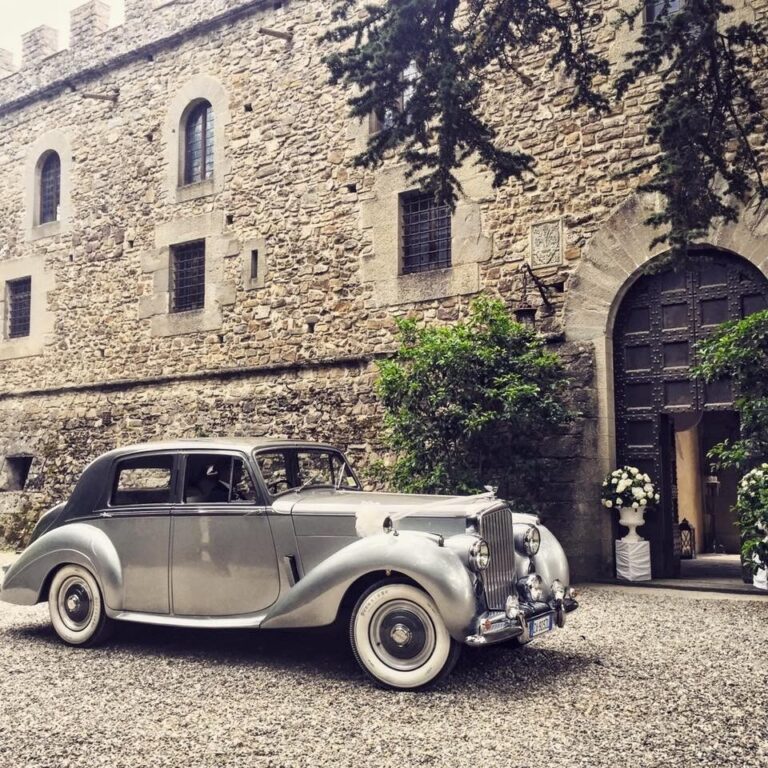Castello di Montegufoni: A Historic Medieval and Renaissance Castle in Italy
Visitor Information
Google Rating: 4.4
Popularity: Low
Google Maps: View on Google Maps
Official Website: www.montegufoni.it
Country: Italy
Civilization: Unclassified
Remains: Military
History
The Castello di Montegufoni is located near Montespertoli in modern Italy. It was originally established by the noble Ormanni family during the early medieval period, likely in the 10th or 11th century, situated strategically along the ancient Via Volterrana road connecting Florence and Rome.
In the 12th century, specifically in 1135, the castle suffered a significant attack by Florentine forces who aimed to destroy it, leaving the structure in ruins for much of the century. The property was recovered and passed into the hands of the Acciaioli family in the 13th century. This family, well known for their banking activities, developed Montegufoni into a fortified complex comprising a central castle surrounded by seven smaller dwellings enclosed within defensive walls, collectively called the “seven old villas of the ancestral castle.”
The early 14th century saw the birth of Niccolò Acciaioli in Montegufoni in 1310. He would later rise to significant prominence as Grand Seneschal of the Kingdom of Naples and was closely associated with the literary circle of Boccaccio and Petrarch. In 1348, the castle welcomed King Louis of Taranto, an exiled monarch of Naples after disputes with the Hungarian king. Louis often dined with the local Bishop Angelo Acciaioli in the castle’s Banquet Hall, a space now called “the Theatre,” which overlooks the “Courtyard of the Dukes.”
During the late 14th century, Donato Acciaioli, holding titles such as Duke of Athens and Gonfaloniere (standard-bearer) of Florence, commissioned the construction of the castle’s prominent tower in 1386. Although Donato was banished from Florence in 1396, the castle remained in the family’s possession thanks to his brother, a cardinal of the Church. The 16th century brought further changes when another Donato Acciaioli undertook restoration work in 1546, redesigning the tower to resemble the Arnolfo Tower of Florence’s Palazzo Vecchio and adding an armory now known as “La Galleria.” This development marked Montegufoni as a notable center for artistic patronage in Florence.
The early 17th century included a visit from Grand Duke Cosimo II de’ Medici in 1612. Around 1650, Donato and his wife Anna Maria Altoviti completed major restorations that unified the previously separate seven buildings into the castle’s present layout. Throughout the 17th and 18th centuries, the castle remained a hub for Florentine high society until the Acciaioli family’s decline led to the sale of the estate to the Baracchi family.
In the 20th century, the castle was acquired in 1909 by Sir George Sitwell on behalf of his son Osbert Sitwell, who enhanced the property with new decorations, including the commissioning of futurist painter Gino Severini. Severini painted frescoes in 1921 featuring thematic elements such as masks and harlequins within a room called “La Sala delle Maschere.”
During the Second World War, Montegufoni served as a secure repository for 261 artworks, safeguarding masterpieces by artists such as Ghirlandaio, Botticelli, and Giotto from theft and damage. After the war, the castle continued as a cultural venue, attracting artists from America and England. Sir Osbert Sitwell lived there from 1966 until his death in 1969. Ownership transferred in 1972 to Sergio Posarelli, who restored the castle for use as a luxury holiday locale. Following his passing in 2013, the estate passed to his three children. Today, the castle is divided into several apartments and is primarily used for events such as ceremonies and conferences.
Remains
The Castello di Montegufoni is notable for its composition as a fortified complex featuring a central palace surrounded by seven smaller buildings enclosed within defensive walls. These seven buildings, historically referred to as the “seven old villas of the ancestral castle,” reflect the castle’s development from a medieval stronghold to a Renaissance residence. The complex sits amid terraces adorned with floral arrangements, alongside cultivated areas including potted lemon trees, fig trees, olive groves, and surrounding vineyards.
Dominating the castle’s silhouette is the tower originally constructed in 1386 by Donato Acciaioli. This tower underwent restoration in 1546 to mimic the architectural features of the Arnolfo Tower of Florence’s Palazzo Vecchio, displaying a blend of military function and Renaissance style. Near the tower, the mid-16th century armory known as “La Galleria” was established, which became a notable setting for artistic activity within the castle walls.
One of the castle’s important interiors is the Banquet Hall, presently called “the Theatre.” This hall looks out over the “Courtyard of the Dukes,” a space named after the Acciaioli family members who held ducal titles and resided there. The castle also preserves 20th-century artistic contributions, notably the frescoes by Gino Severini, who decorated “La Sala delle Maschere” and other rooms with vibrant images such as masks, harlequins, and an owl, commissioned in 1921.
The Church of San Lorenzo, situated within the castle grounds, contains significant artworks including a Rococo fresco by Giovanni Domenico Ferretti and a painted crucifix by Taddeo Gaddi, highlighting the site’s religious and artistic heritage. A Madonna and Child painting from the 14th century originally housed in the church, produced in the workshop of Lippo di Benivieni, is now preserved in the Museo di Arte Sacra located in Montespertoli.
Beneath the first terrace of the castle grounds lies a grotto that retains remnants of frescoes, testifying to the historical presence of artistic decoration in even the less formal parts of the estate. The castle has undergone careful restoration and adaptation to modern uses, including subdivision into residential apartments and the creation of spaces suitable for hosting ceremonies and conferences, all while maintaining its historic architectural character.










